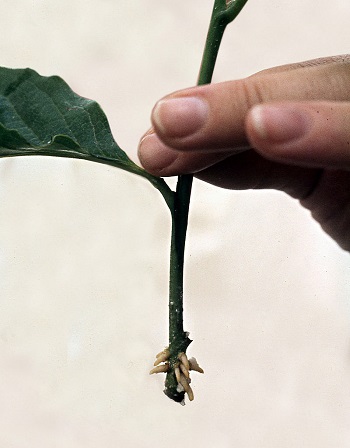The world of gardening and horticulture is teeming with creative techniques to cultivate plants. Among these, asexual plant propagation through cuttings stands out as a remarkable method that allows gardeners to replicate their favorite plants with precision. This process unlocks the fascinating potential of plants to regenerate and flourish anew. In this article, we’ll explore the art and science of asexual plant propagation using cuttings, unveiling the steps, benefits, and tips to successfully propagate plants from cuttings.
Understanding Asexual Plant Propagation
Asexual propagation, also known as vegetative propagation, involves growing new plants from existing ones without the involvement of seeds. This method preserves the characteristics of the parent plant, creating identical clones. One of the most common techniques within asexual propagation is using cuttings, where portions of the parent plant are taken and encouraged to develop roots and grow into a new plant.
The Cuttings Technique: Steps and Essentials
Selecting the Parent Plant: Choose a healthy and disease-free parent plant that exhibits the qualities you want to replicate. This could include desirable flower colors, foliage patterns, or growth habits.

Gathering Cuttings: Using sharp, clean scissors or pruning shears, take a cutting from the parent plant. The cutting should ideally have several nodes (joints) as these are where roots will emerge.
Types of Cuttings: There are different types of cuttings, including softwood, semi-hardwood, and hardwood, depending on the maturity of the plant material. Softwood cuttings are taken from young, flexible growth, while hardwood cuttings come from more mature wood.
Preparation: Trim the cutting to have at least one or two nodes. Remove any leaves from the lower nodes to prevent excessive moisture loss and encourage root growth.
Rooting Hormone: Applying a rooting hormone powder or gel to the cut end of the stem can enhance the formation of roots.
Planting Medium: Plant the cutting in a well-draining rooting medium such as a mix of peat moss and perlite, or a mixture of sand and potting soil. Insert the cutting into the medium, ensuring that at least one node is buried.
Humidity and Environment: To create a humid environment, cover the cutting with a plastic bag or place it under a clear plastic dome. Keep the cutting in a warm, bright, but indirect light location.
Root Development: Over the course of several weeks, the cutting will start developing roots. You can check for root growth by gently tugging on the cutting to feel resistance.
Transplanting: Once roots have formed, the cutting can be transplanted into a larger pot with regular potting soil. Gradually expose the new plant to normal humidity levels and light.
Benefits of Asexual Propagation using Cuttings
Cloning Desired Traits: Asexual propagation allows gardeners to replicate plants with specific traits they admire, ensuring consistency in flower color, growth habit, and other characteristics.
Faster Growth: Cuttings typically establish themselves faster than plants grown from seeds, as they bypass the seed germination stage.
Preservation of Rare Varieties: For rare or unique plant varieties, asexual propagation ensures their preservation, allowing gardeners to share and enjoy them for generations.
Reduced Genetic Variation: Since asexual propagation creates clones, it reduces genetic variation, maintaining the desirable qualities of the parent plant.
Tips for Success
Timing: Choose the right time for taking cuttings, usually during the plant’s active growing season.
Hygiene: Use clean, sharp tools to prevent the spread of diseases and ensure clean cuts.
Moisture Control: Avoid overwatering cuttings to prevent rot. Maintain a balance between humidity and moisture.
Light: Provide bright, indirect light for rooting, but avoid direct sunlight, which can cause excess heat and drying.
Patience: Successful propagation takes time, so be patient and monitor the progress regularly.
Conclusion
Asexual plant propagation using cuttings is a fascinating and rewarding endeavor that bridges the gap between science and art in gardening. This technique enables gardeners to perpetuate their favorite plants while preserving their unique characteristics. By following the steps, adhering to best practices, and exercising patience, gardeners can unlock the magical potential of cuttings to grow thriving new plants, continuing the legacy of nature’s beauty in their own spaces.
Related Articles & Free Email Newsletter Sign Up
How Rooting Compounds Work and Why You Need Them
How to Select the Perfect Donor Plant for Successful Propagation
Tissue Culture Cloning for Beginners: A Step-by-Step Guide to Plant Propagation




Comment here